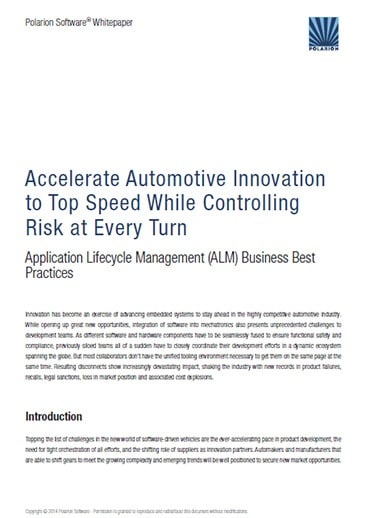Guest Blog: Haste Makes… Automotive Product Recalls!
With automotive product recalls rocketing up to levels that we never imagined possible, we who work ‘in the trenches” in the automotive industry keep asking ourselves: “how did this happen?”. And we keep arriving at one simple answer: development in a rush.
What we have
 Nowadays, automotive technologies have implementations of things that we saw in fiction movies not long ago. They are such cool features, but there’s a downside: everybody wants to ride the trend to capture as many customers as possible. For developers, that translates to “deliver more complex systems in less time”.
Nowadays, automotive technologies have implementations of things that we saw in fiction movies not long ago. They are such cool features, but there’s a downside: everybody wants to ride the trend to capture as many customers as possible. For developers, that translates to “deliver more complex systems in less time”.
Some consumers are even starting to think of a vehicle as one more piece of “consumer electronics”, to be changed like the latest mobile phone. Truly, we are not far from that point, and every day there is more and more personalization. We’re even looking at “multimedia skins” in vehicles. The fact of life today is more sophisticated and complex product development. But in order to be atop “the trend”, everything must be designed faster.
What we need
What today’s automotive industry needs is a tool that is not merely a configuration management tool, but an enabler for visualizing what is planned and designed, in a single environment for project management that communicates analysis, design, implementation, verification, and release of a product. Having multiple tools for these different activities is just a nightmare for designers and developers.
I truly believe that quality can be achieved if development can be focused on the design, and not on the verification. But without the right tool, the interchange of information and the following of documents is extremely difficult to achieve and maintain over time. In consequence, “recalls happen” – because there was no proper follow up of the design.
Maria Eugenia Zuniga is Vehicle Software Quality Engineer for Quantum Technologies, Inc. She a has 15+ years of experience as a software architect, developer, and process implementer. Her strong analytical and creative problem solving skills have enabled her engineering teams to focus on their development tasks while automated processes helped prove compliance without adding administrative burden.



